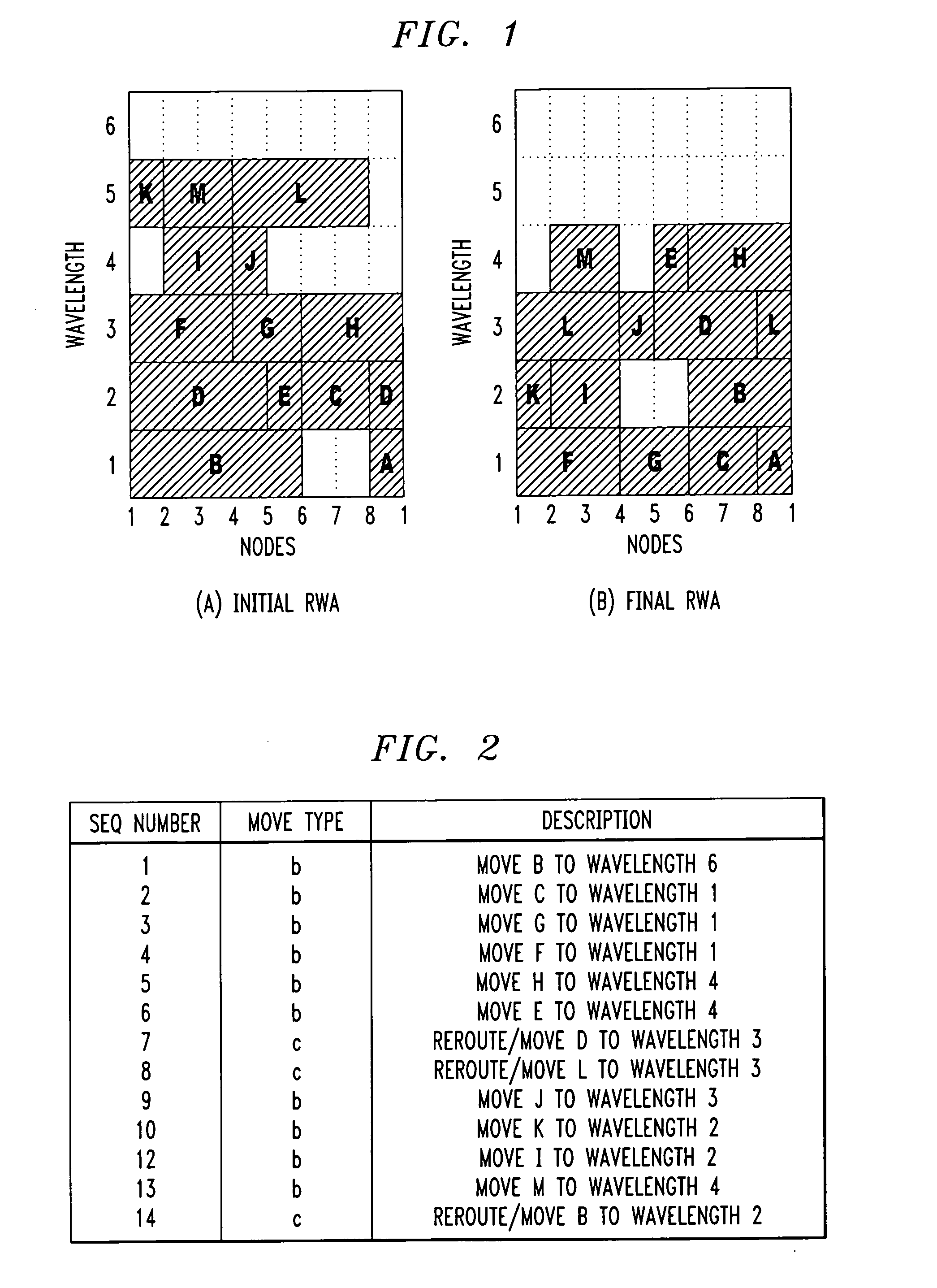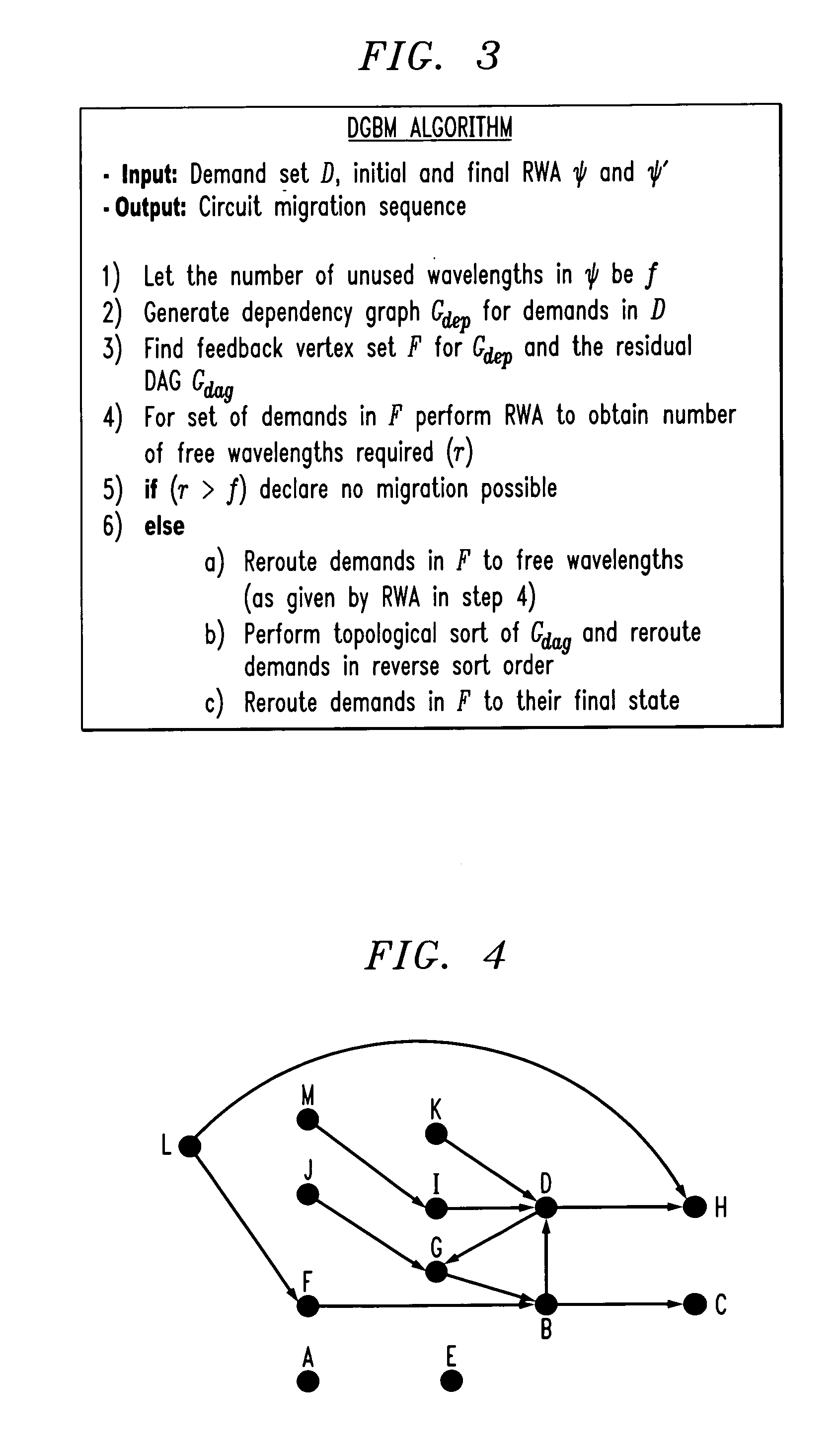Methods and apparatus for optimizing utilization in reconfigurable optical add-drop multiplexer based ring network
a ring network and add-drop multiplexer technology, applied in the field of data communication networks, can solve the problems of little use in optimizing an operational network, less effort in practice, and greater network churn
- Summary
- Abstract
- Description
- Claims
- Application Information
AI Technical Summary
Benefits of technology
Problems solved by technology
Method used
Image
Examples
experiment 2
[0093] B. Effect of Ring Size
[0094] To understand how the number of nodes in a ring affects the performance of various algorithms, we perform simulations for 4, 8 and 16 node rings. The results for a band of 16 wavelengths under no churn and when one free wavelength (6.25% free) is available are as shown in FIG. 15.
[0095] Consider the DGBM-WE algorithm. Its performance is better for a 4 node ring than a 8 or 16 node ring. This is because in a 4 node ring, ⅔ of the demands are among immediate neighbors and the rest are 2 hop. Hence, in the dependency graph, most of nodes have just one outgoing edge. This makes the graph sparse and unlikely to have many cycles, thus improving success rate for DGBM-WE. For DP and GM algorithms, performance is better for larger rings than for smaller rings. This can be attributed to the fact that on smaller rings, most wavelengths are perfectly packed in initial as well as final RWA layouts. Such packing makes finding subsets of sets in the final part...
experiment 3
[0096] C. Effectiveness of GM-T for Various Band Sizes
[0097] From experiments above, GM-T performs the best. To further establish GM-T as the best in class, we study how its effectiveness varies as a function of band size. The results for the case when free wavelengths are fixed at 12.5% of total wavelengths are shown in FIG. 16 for rings of size 4, 8 and 16 nodes with moderate churn. The success rate for the GM-T algorithm remains high consistently and shows almost no sensitivity to band size for all the ring sizes.
VII. Illustrative Hardware Implementation
[0098] Referring now to FIG. 17, a block diagram illustrates a generalized hardware architecture of a computer system suitable for implementing a system for optimizing utilization in a ring-based network, according to an embodiment of the present invention. More particularly, it is to be appreciated that computer system 1700 in FIG. 17 may be used to implement and perform the methodologies of the invention, as illustratively d...
PUM
 Login to View More
Login to View More Abstract
Description
Claims
Application Information
 Login to View More
Login to View More - R&D
- Intellectual Property
- Life Sciences
- Materials
- Tech Scout
- Unparalleled Data Quality
- Higher Quality Content
- 60% Fewer Hallucinations
Browse by: Latest US Patents, China's latest patents, Technical Efficacy Thesaurus, Application Domain, Technology Topic, Popular Technical Reports.
© 2025 PatSnap. All rights reserved.Legal|Privacy policy|Modern Slavery Act Transparency Statement|Sitemap|About US| Contact US: help@patsnap.com



